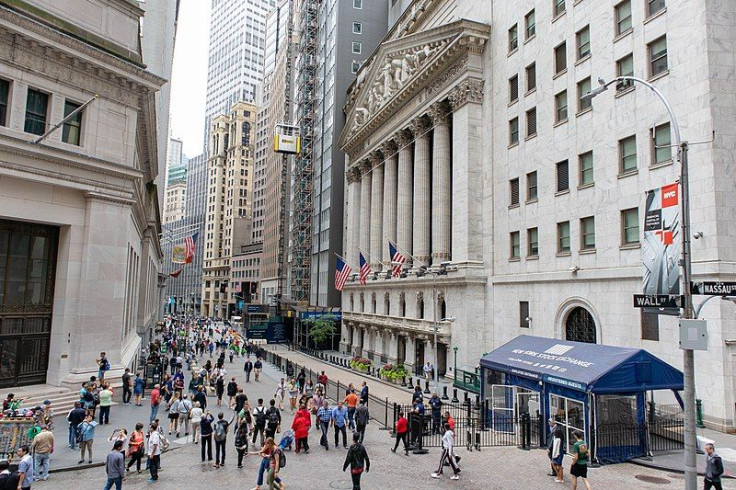Tuesday's Stock Market Close: US Equities Drop To Finish Unforgettable Quarter Of Extreme Volatility

KEY POINTS
- For the first quarter, the Dow dropped 23.2%, while the S&P 500 plunged 20%.
- New York City has become the epicenter of the coronaviru epidemic in the U.S.
- Consumer confidence index dropped to 120 in March from 132.6 in February
U.S. stocks dropped on Tuesday to finish a first quarter of unprecedented events and extreme volatility.
The Dow Jones Industrial Average dropped 410.32 points to 21,917.16, while the S&P 500 fell 42.06 points to 2,584.59 and the Nasdaq Composite Index tumbled 74.05 points to 7,700.10.
For the first quarter, the Dow dropped 23.2%, while the S&P 500 plunged 20%.
The Dow’s worst quarter ever was the fourth quarter of 1987 when it plunged 25.3%. The S&P 500 ′ s worst three-month was the fourth quarter of 2008, when the index tumbled 22.6%.
Volume on the New York Stock Exchange totaled 5.21 billion shares with 1,321 issues advancing, four setting a new high, and 1,666 declining, with 28 setting new lows.
Active movers were led by Ford Motor (F), Amarin Corp. PLC (AMRN) and Carnival Corp. (CCL).
New York Gov. Andrew Cuomo said coronavirus cases in the state jumped by 14% in one night to more than 75,000.
Goldman Sachs said that the economy might plunge by 34% in the second quarter, but added that it would quickly recover.
Dr. Anthony Fauci, director of the National Institute of Allergy and Infectious Diseases, said he is beginning to see “glimmers” that social distancing is helping to tame the spread of the coronavirus.
In economic data, the Conference Board said its consumer confidence index dropped to 120 in March from 132.6 in February.
The S&P CoreLogic Case-Shiller Index, which measures home prices, rose 3.9% annually in January, up from 3.7% in December. However, this data predates the emergence of the coronavirus.
“As we conclude an unforgettable March and [first] quarter today, the market seemingly has drifted (spiked) to no man’s land,” wrote Frank Cappelleri, executive director at Instinet. “For what it’s worth, April has a better track record on average (+1.7% the last two decades, with a 75% win rate). It, too, has tended to do better in the final two weeks.”
“Last week’s double-digit gain for markets was a welcome relief rally, though market bottoms are rarely as clean as this one has been,” said Mark Hackett, Nationwide’s chief of investment research. “Markets will need to reflect more traditional interactions before confidence in a bottom can be reached.”
“We anticipate that market volatility will [remain] until liquidity, credit, and health risks have demonstrably passed,” warned Lauren Goodwin, economist and portfolio strategist at New York Life Investments. “With major policy stimulus now in place in the U.S., we expect grim health and social news to dominate the next couple of weeks.”
Overnight in Asia, markets were mixed. China’s Shanghai Composite slipped 0.11%, while Hong Kong’s Hang Seng gained 1.85%, and Japan’s Nikkei-225 dropped 0.88%.
In Europe markets closed higher, as Britain’s FTSE-100 rose 1.95%, France’s CAC-40 edged up 0.4% and Germany’s DAX rose 1.22%.
Crude oil futures rose 1.14% at $20.32 per barrel, Brent crude slipped 1.25% at $26.02. Gold futures fell 3.02%.
The euro slipped 0.22% at $1.022 while the pound sterling edged down 0.09% at $1.2404.
The yield on the 10-year Treasury gained 4.18% to 0.698% while yield on the 30-year Treasury jumped 5.38% to 1.351%.
© Copyright IBTimes 2024. All rights reserved.



















